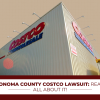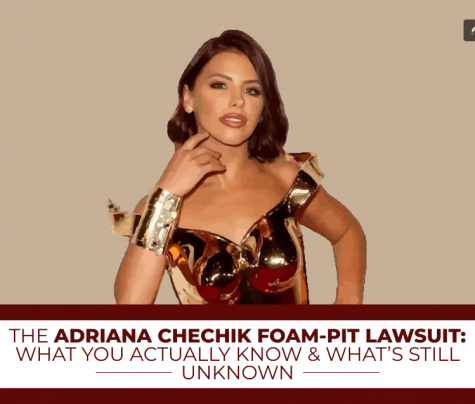
To prove Las Vegas personal injury, you have to establish that a third party is responsible for your injury or that their negligence has caused you injuries.
However, it’s difficult to prove that the third party failed to act reasonably under a particular circumstance.
In this context, a Las Vegas personal injury attorney is crucial in gathering evidence, presenting a compelling case, and ensuring victims receive what they deserve.
Hi, in today’s blog, we break down the key elements of negligence and explain how to build a strong case for maximum compensation.
However, before that, we want to discuss the types of damages that can happen in a personal injury case in Nevada. So, keep reading.
Types Of Damages In Las Vegas Personal Injury Cases

There are three categories of damages in Las Vegas personal injury cases. The categories are economic, non-economic, and punitive.
Each type of compensation has a different purpose. For example, the economic damages cover tangible costs and compensation. Further, the non-economic category includes emotional or other damages.
The table below further gives you a detailed idea about each type of damage.
| Types Of Las Vegas Personal Injury Damage | What It Covers/Addresses |
| Economic Damages | • Medical bills • Loss of income • Damage to property • Rehabilitation expenses • Other past and future costs caused by the accident |
| Non-Economic Damages | • Emotional distress • Pain • Suffering • Loss of enjoyment in life • Impacts on quality of life |
| Punitive Damages | • Extreme negligence • Intentional harm |
In punitive damages, the wrongdoer faces legal charges and punishments. Moreover, in Nevada laws, most Las Vegas personal injury cases are covered under punitive damages.
Key Elements Of Proving Negligence In Las Vegas Personal Injury Claims
Nevada law mentions that you are not automatically eligible for compensation if you are involved in an accident.
To make a Las Vegas personal injury claim, you have to establish that the other person is negligent based on the four essential elements.
These essential elements are 1. duty of care, 2. breach of duty, 3. causation, and 4. damages.
1. Establishing Duty of Care In Las Vegas Personal Injury Claims
Mark has met an accident, and as a victim of severe injury, he has made a personal injury claim. He followed the traffic rules and was particular about the car’s speed.
So, his attorney could easily establish that he was abiding by the duty of care while driving his car.
Now, every successful Las Vegas personal injury claim starts with proving that the responsible party had a legal duty to act reasonably.
Some examples of adhering to the duty of care are:
- Complying with traffic laws while driving
- Maintaining safe premises for property owners
- Customer safety for business
If you cannot prove care of duty, it is impossible to establish your personal injury claims.
| In customer safety for business, you must be familiar with how Philips had to pay a $1.1 billion settlement of personal injury claims by the ones affected by Philips BiPAP machines, CPAP, and ventilators. |
Furthermore, in this context, you must be familiar with the role of comparative negligence in Nevada.
For example, if you are involved in a road accident where you and the other party are at fault, your claim will come under the “modified comparative negligence rule.”
Let’s give you an in-depth insight into comparative negligence while making a Las Vegas personal injury claim.
Comparative Negligence In Nevada: Know How It Works
The Nevada Revised Statutes 41.141 says that a plaintiff is only eligible for compensation if their degree of fault in the case is less than 51%.
However, the compensation you get will depend on the level of your fault in the injury case. Let me share an example with you.
- You are involved in a personal injury case in which you are 30% at fault.
- The total damage caused by the incident is $100000.
- So, you are eligible to get a compensation of $30000.
So, while making a Las Vegas personal injury claim, your attorney will work on proving liability. They will also put an effort to reduce your assigned fault.
Nevertheless, if your assigned fault is above 51% in any case, you are not eligible to get any compensation.
How Do I Know That The Defendant Owes Me A Duty Of Care?
Duty of care is easily understood in cases of injuries caused by physical proximity or damages in car accidents.
However, in other scenarios, the duty of care arises when you have a contractual relationship with someone.
For example, you have a car, and you have hired a mechanic for some repair work. Now, it is the responsibility of the mechanic to abide by the duty of care.
If he fails to abide by the same and your car gets involved in an accident because of that, you can hold him liable for the damage.
2. Demonstrating A Breach Of Duty
Once duty is proven, you have to demonstrate the breach that the responsible party cannot deny. A breach refers to acting recklessly or failing to take reasonable precautions.
For example, a car accident could involve speeding or driving under the influence, or a slip-and-fall case could include failing to clean up a hazardous spill.
Evidence that works as a testament and strengthens the argument in breach of duty are:
- Eyewitness accounts
- Expert testimony
- Security footage
3. Proving Causation
Causation links the negligent act to the injuries suffered. You must show that the responsible party’s actions directly led to the harm.
Insurance companies often attempt to argue that pre-existing conditions or unrelated incidents caused the injuries.
Medical records, expert analysis, and detailed incident reports are crucial in proving this connection.
4. Documenting Damages
You have to document the damages to make a claim. You must present clear proof of financial, physical, and emotional losses.
Medical bills, lost income, rehabilitation costs, and pain and suffering all factor into the compensation sought.
With detailed records, your personal injury case becomes full-proof. Moreover, when you have the records, your insurance company will not be able to minimize payouts.
5. Gathering Strong Evidence
You need clear evidence to prove negligence. You must try to collect the following evidence.
- Photographs from the accident scene
- Video footage
- Police reports
- Eyewitness statements
Medical documentation and expert testimony further validate the claim, leaving little room for dispute.
6. Filing the Claim Within Legal Deadlines
Las Vegas follows Nevada’s legal guidelines for personal injury claims, including strict time limits. If you miss the deadline, it can cause dismissal, regardless of the strength and merit of the case.
You must act swiftly to gather evidence, consult legal professionals, and initiate the process before time runs out.
7. Countering Common Defenses
Opposing parties often attempt to shift blame onto the victim or argue that the injuries resulted from unrelated factors.
Comparative negligence laws in Nevada allow compensation even if you, the victim, share partial fault, but the settlement decreases based on the percentage of responsibility.
Presenting clear evidence and a well-documented case prevents these tactics from reducing rightful compensation.
Take A Well Structured Approach To Prove Negligence In Las Vegas Personal Injury Claims
Proving negligence in Las Vegas personal injury needs to have a well-structured approach and the backing of substantial evidence.
You have to establish a duty of care, demonstrate a breach, establish causation, and document damages to make a successful claim.
Further, you need to act fast in seeking medical attention, gather evidence that qualifies to back your case and anticipate common defenses to improve the chances of securing fair compensation.
You need to build a solid case to stand the best chance of finding negligent parties accountable and receiving the justice you deserve.
Read Also:
- The Essential Guidelines for Witnessing an LPA
- What is the Role of an Expert Witness in a Car Accident Trial?
- An Ultimate Guide To Personal Injury Claim Settlement Process











0 Reply
No comments yet.